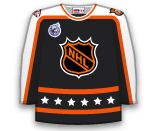Darnell Nurse will get into the lineup tonight with Petry taking a seat despite being completely healthy. Petry has not recorded a point with five shots and an EVEN rating while playing an average of 18:32 in the first two games.

Darnell Nurse will get into the lineup tonight with Petry taking a seat despite being completely healthy. Petry has not recorded a point with five shots and an EVEN rating while playing an average of 18:32 in the first two games.

Nurse, 19, was the seventh overall pick in the 2013 NHL Draft. He will replace Jeff Petry in the Oilers lineup tonight and likely skate with Andrew Ference. He had 13 goals and 37 assists (50 points) in 64 games in the OHL last season.

Head coach Ted Nolan said that Hodgson's stay on the wing is over because the centres could not get him the puck. Hodgson will shift back to the middle between Marcus Foligno and Chris Stewart tonight vs. Carolina.
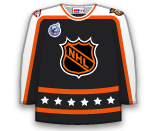
Reinhart has no points, two shots and a minus-1 rating while averaging 12:47 TOI in his first three NHL games. The Sabres can keep him up for nine-games without burning a year of his entry level contract, so going to the fourth line seems like he is destined to be returned to juniors after the nine-game stint.

Strachan will replace Andrej Meszaros on the blueline after Mezaros posted a dreadful minus-6 rating through the first three games of the season. The 29-year-old D-man had just two assists in 18 games with the Capitals last year.
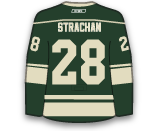
Gagne did not play last season and only scored five goals and 11 assists (16 points) in 38 games between the Kings and Flyers in 2012-13. Gagne skated on the fourth line with Ryan Spooner and Daniel Paille in Tuesday's practice.
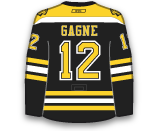
Malone will start his Rangers career on the fourth line with Dominic Moore and Tanner Glass, but he will also play on the Rangers' top power-play unit. Malone had his trouble with the law last season due to cocaine possession but he is a six-time 20-goal scorer and could help the Rangers power-play. He had just 15 points (5G / 10A) in 57 games with the Lightning last year.
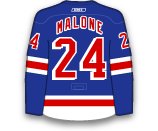
Nyquist finished Saturday's game on the top-line and it looks like he will start Wednesday's game with Hank and 'The Mule'. Nyquist has picked up right where he left off last season, scoring a goal in each of his first two games.

Head coach Lindy Ruff said he is considering shaking up the lines for Tuesday's game, including putting Eakin on that top line. Seguin and Benn have no points and are a combined minus-6 so far. If Eakin gets moved up that should certainly help him produce and makes him a nice one-day fantasy league option.
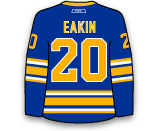
With Vincent Lecavalier out with a lower-body injury, Jones will slide into the lineup for his first game as a Flyer. He is expected to play on the fourth line with Jason Akeson and Zac Rinaldo.

The Flyers are off to a slow start at 0-2 so they have shaken up all three of their top lines in search of more offense. Whoever is playing with Giroux and Voracek is bound to produce at a higher level but Raffl is not a great fantasy option because his job on the top line may be short lived.
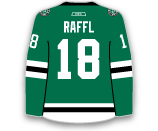
Karlsson was the Ducks second round pick (53rd overall) in 2011.The 21-year-old skated on the Ducks third line between Jakob Silfverberg and Andrew Cogliano today and could replace Rickard Rakell in the lineup on Saturday. Karlsson had 15 goals and 22 assists (37 points) in 55 games in Sweden last season and nine points (2G / 7A) in nine games in the AHL after coming to North America.

After the Kings 4-0 loss to the Sharks on opening night, head coach Darryl Sutter elected to switch the lines up already and the switch has Williams playing with Kopitar and Gabo. This was the line that Williams played with in his tremendous playoff run and should lead to more goal scoring opportunities for him in the regular season. He was a minus-2 with five shots in 15:31 on Wednesday.
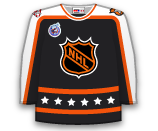
Callahan had one goal on three shots in 20:59 of ice time in the Lightning season opener. Moving to the top-line should definitely help increase Callahan's production.
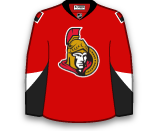
Reinhart, 20, was the Islanders first round pick (4th overall) in 2012. Reinhart is coming off of a season where he had four goals and 17 assists (21 points) in 45 games with the Edmonton Oil Kings (WHL) last season. Reinhart will play with Brian Strait on the Isles third pair.

Panik was claimed off of waivers from the Lightning on Wednesday and it looks like he will play on the Maple Leafs third line with Peter Holland and Daniel Winnik on Saturday. Panik has a lot of offensive skill, but still needs to work on the defensive part of his game.

Wideman, who is the highest paid player on the Flames roster will be a healthy scratch tonight on the second night of a back-to-back. Wideman had no points and was a minus-1 in 16:30 against Vancouver last night. Raphael Diaz will enter the lineup fo Wideman.
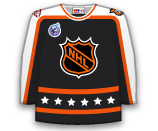
van Riemsdyk, 23, is the brother of Maple Leafs forward James van Riemsdyk. Trevor will make his debut tonight with Niklas Hjalmarsson as his D partner. He spent the last three years at the University of New Hampshire and posted four goals and 19 assists (23 points) in 26 games last season.

Just three days after signing a three-year, $12 million dollar deal, Johansen will throw that Blue Jackets jersey on and lace em up tonight vs. the Sabres. He only has one practice and a gameday skate under him, so you can expect a little rust. With all the injuries in Columbus right now, the Jackets will lean heavily on Johansen and his linemates Nick Foligno and Cam Atkinson.

Weiss, 31, had a disastrous debut season with the Red Wings and 2014-15 will start with him sitting in the press box. He has played just 43 games and recorded only three goals and five assists over the last two season and with the emergence of Riley Sheahan and a healthy Darren Helm, Weiss may find it difficult to get into the lineup at times this season.
